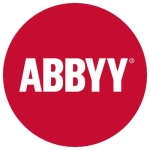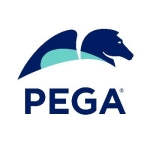What is our primary use case?
I work for an international consulting firm and we work with enterprise clients. Our job is to provide them with RPA solutions and ultimately, we would like to provide opportunities for them to have every kind of automation.
We began with use cases in accounting and controlling departments, after which we moved to automate banking, legal, and IT processes. Nowadays, we are reaching out to HR to help automate some of their minor processes.
To this point, our implementations have been in an on-premises environment. At this time, we are in the process of migrating our on-premises UiPath environment to the cloud.
When I joined the RPA team, coming from a DevOps position, I assisted them with IT-related tasks such as implementation, packages, etc. I went on to become an RPA developer and began working on business sue cases. As part of my duties, I search for opportunities, help find internal clients, and improve governance inside of our enterprise. I am involved in all of the steps in the framework.
Our first automation was an on-demand service, used internally for us. We deployed an on-premises orchestrator, also used on an on-demand basis. Once we got this experience, we started building other solutions.
We deployed an internal chatbot named Alex, and our employees can ask whatever they want. For example, you can ask Alex what your salary is. Depending on your privileges, you will get more or less information. Everything is done using robots.
How has it helped my organization?
UiPath makes it easy to develop automations and this is the main selling point. I can speak with a client and in the meantime, I can prepare a demo on the fly that captures the client's thoughts at the moment. What it means is that as I'm speaking with you, I can start preparing a small demo. I find the product fun to work with.
An example of how this has improved our business is when dealing with internal clients. For example, if an internal business manager wants to use BI and needs to create a report with a specific set of data, they traditionally had to reach out to the IT department. IT will first examine the needs, then discuss how it is developed. It may need a database instance or other tools, for example. Traditionally, this is how it is done.
One of the problems with this approach is that our headquarters is in France, and they are used to having internal discussions about everything. For a use case like this, they will consider all of the needs and other points before making a decision. It can be very time-consuming.
However, if we consider the same use case, using UiPath, we are able to create reports on the fly. We can be right in the same meetings with the IT people when we do it.
If you're from a legal department and your solutions involve HR, as well as other company departments, I can automate several processes in four hours. Then, all of the processes can run during the night. It is an amazing product in this regard.
As we automate processes, another benefit that we receive is the ability to generate internal reports comparing departments and processes. We give these reports to the heads of the company to provide intelligence, helping them to better understand the organization.
As an example of somewhere that UiPath has saved money, I implemented automation to replace a tool that one of our clients has. It is an internal timesheet tool and although the company uses SAP and SAP HANA for these tasks, this tool handles aspects that are specific to Spain. It is a small tool but is needed for a particular purpose.
The initial development of the tool, handled by an external third party, cost €20,000 (approx $22,500 USD) and there is a monthly maintenance fee of €700 (approx $790 USD). We discussed replacing the tool with our client but they were hesitant to change because they already had the solution.
We offered to replace their tool for free because we are trying to internalize processes, so there was also a benefit for us. We explained that once it was completed, we would be responsible for performing the calculations and analysis to ensure that the replacement was working properly. They agreed and it took me only one day to complete the automation. Now, it takes only a single button click from beginning to end. At the end of the day, it brings in all of the jobs. This automation saves them €700 per month in maintenance costs and it would have saved the initial development and deployment fee had it been implemented using UiPath from the beginning.
It was very easy to see that they were wasting money, and this is happening in a lot of places. We proposed to them that for these tasks, we would charge €600 (approx $675 USD) per day as consultants, and then for maintenance, we would bill them a monthly fee equivalent to 16% of the cost of the robot. For the bot used to replace their tool, it took me one day to develop and two days to plan and design it. The initial cost would have been €1,800 (approx $2,000 USD) and the monthly maintenance fee €200. They switched from their tool to the robot, since it was only costing €200 instead of €700 per month.
After they switched, they realized the power of automation and have since asked us about automating more of their internal processes. They have presented a storm of ideas, and the potential for savings is amazing.
You cannot compare whatever you do with a robot to a traditional software tool, package, or service. This example of the tool that we replaced is only one use case, and there are others but they are all more complex. Overall, it saves a lot in terms of time and cost.
What is most valuable?
The most valuable feature is the forum, where there is lots of help available. For me, UiPath is the perfect partner to converse with. I have brought four or five topics to the forum and every time that I was stuck, the problem had already been registered. I see the comments from the internal team and they are always tuned to the issue, always looking to fix small problems that have been found. We find that after they have been pointed out, fixes come included in the next release.
The interface is intuitive and very user-friendly.
The UiPath Academy provides courses to help you get up to speed with the solution, and to my thinking, it is crucial to start with this training. Developing a report in UiPath and other RPA solutions is very different from the traditional way to learn. When I studied in university, software development was focused on data structures and optimization. This varies a little bit depending on the programming language but more or less, this is what every framework follows. It's logical and we are always trying to optimize our processes. With RPA, it's different because you base your process on the logic, and then tweak with the tools. It's the difference between painting a picture and shaping an object. For me, the training was crucial and it helps a lot to learn right from the beginning.
The basic course took me four or five days to complete. Just with that, it was enough to become familiar with the framework and quite enough to start making your own automations.
I'm always looking for new courses from the Academy. For example, I completed the architect training, as well as the course on governance. The academy is well structured and very useful, although not mandatory because you can start by yourself. That said, I definitely recommend it.
We use the AI-enhanced document understanding capabilities, as well as other related features.
What needs improvement?
UiPath is based on the .NET framework, which means that we are currently limited to Windows deployment.
The update process has resulted in several small issues for us. Sometimes when you update, there are several lines that are not included in the package. This kind of technical error, even though it's small, has to improve. I understand that they are trying to implement all of the services that they can, and this kind of thing happens when you expand your model. The same thing happens to us. That said, it needs to improve.
The .NET formwork is well known, as is C#, but it requires a lot of computing power. Everything is JSON-based, so it always has to preload all of the information. This means that there is overhead in the performance and if it were only a simple query, it might be slower with UiPath. However, with a cloud-based environment, we don't have to worry about this.
When it comes to migration, it's always painful. We have found several issues that require changes to be made from a coding perspective. In our current migration from on-premises to the cloud, we had a problem that delayed us by approximately a week. However, I don't consider this to be a pain point because it's a normal thing that happens when you try to size up your company by introducing many new services.
From a technical perspective, the migration is straightforward but we haven't completed our migration yet because we have not set up the gateways to access our services.
For how long have I used the solution?
I have been working with UiPath since 2019, approximately three years ago.
What do I think about the stability of the solution?
Starting from version 20, UiPath has been very stable. Prior to this, it has not been 100% stable. That said, we have not had any troubles with the platform in general.
The problems that we have encountered were when we tried to upgrade or to migrate by uninstalling and reinstalling the Orchestrator. There were some internal issues where people didn't read the communications that we put out.
Generally speaking, Orchestrator is very well built. We have put a lot of stress on the system and haven't experienced any problems with performance.
What do I think about the scalability of the solution?
Scalability-wise, UiPath is quite good. This is an interesting topic because, in the beginning, I didn't put much thought into scaling. I was used to building solutions, and that's all. UiPath offers special packages that target scaling up. These packages become relevant when you have more than 20 processes.
For example, you can have activities that trigger processes, and you can include one activity inside of another. With these features, you realize that a huge amount of work is already taken care of.
More to how well it scales, they have a very useful package of integration tools.
Personally, I have automated 70 processes and the total for the team is approximately 300. Within the past year, we have delivered more than 200,000 hours of automation.
Since I joined the group, we have brought a lot of RPA clients into the enterprise.
How are customer service and support?
I would rate the technical support an eight out of ten.
The reason for my rating is that I have been waiting since last year for integrations that are coming. With respect to getting support for other things, I have not had any problems.
The support wants to teach us how to build an automation ecosystem inside the enterprise by combining artificial intelligence models, data analysis, and these kinds of things.
During our implementation and afterward, they have given us ideas about how and where things should go. This has been helpful but from my perspective, it is all still a little bit hard to understand. There is a lot of documentation to study. This is, in part, because they are growing and building.
Which solution did I use previously and why did I switch?
I have done several RPA jobs in telecom when I worked for another company.
How was the initial setup?
We first deployed version 18 of UiPath, and we found the initial setup to be quite straightforward. It was well packaged and easy to install.
The only pain point for us was issues related to implementing the solution inside our ecosystem. It contains VMs, firewalls, and other things that add to the complexity. This, however, belongs to us. From the perspective of UiPath, they gave us a package to install the Orchestrator, and another to install the runtime in every machine that we want it to work with. Things are quite straightforward in this regard.
In our case, we needed a newer version that came with some of our internal tools preinstalled. This is because we used to have access through Citrix. The installation was very easy.
It took approximately a day for each installation and within a week to two weeks, the service was working. There were five of us working on implementation and deployment. Four of us were working on installation and testing, and three people in the team were IT architects.
What was our ROI?
UiPath has saved us a lot of time. We calculate our benefit by counting hours saved and last year, we saved 200,000 hours. This means that we replaced between 120 and 140 people by using automation. This is our main metric for calculating cost savings.
Which other solutions did I evaluate?
When we first started with RPA, we compared UiPath with Blue Prism and Automation Anywhere. We chose UiPath right at the beginning.
For me, it was a straightforward choice. UiPath has a lot of help available, and they have a lot of tools. The forum, for me, is the winning factor. For now and in the future, UiPath is the product that I will use.
Another factor in our decision was the ability to use the product before purchasing it. Blue Prism had a demo account so they were a little bit open. However, Automation Anywhere wasn't open at all. They wanted us to pay while we learned how to use it. For me, that was the breaking point because UiPath could be used for free and was open from the beginning.
Coming in as a developer, I very much appreciate that the platform and the code are open. They don't keep everything that they are doing a secret. They have their own business model and they provide the tools. They let you play as much with the solution as you want to.
The interface is also more user-friendly than the other products for creating automations. In fact, I didn't use the other tools very much. In total, we evaluated them for two months, although this time included installation, learning how to use the platform, and trying different automations. Ultimately, based on everything, we chose UiPath.
We tried to compare the products while we were creating simple automations and on every point, we found a huge distance between UiPath and the other tools. For example, the interface was much more intuitive than the other two products.
At the time, UiPath wasn't as big as the other two solutions. However, it had a lot of potential for growth. This was another point that my boss took into consideration when making the decision.
Since the beginning, UiPath has been trying to work out a partnership with Google, including the main tools and main services. For us, and from an enterprise perspective, that is very good. We expect UiPath to grow a lot.
What other advice do I have?
If we have a server and a good investment in machines, virtual or physical, then we don't have anything to worry about.
As I continue my career in RPA, what I understand is that it's the beginning of a new industry. It's like an industrial revolution, but for automation. When we began with use cases in accounting and banking, it was all related to numbers and we were always using structured data. However, today, we are using things like chatbots. We are also expanding into AI use cases and UiPath continues to grow to include new capabilities and functionality.
In the next ten years, I expect there to be a huge demand for automation. This will be in every kind of enterprise, as well as our day-to-day life. One example is the smart house, with implementations for domestic processes.
My advice for anybody who is implementing UiPath is, firstly, not to panic. It is a new way to develop and understand your business model. Second, do not go too fast. Sometimes, the easiest way to develop robots can lead you to forget about your basics and best practices. Third, bring a strong internal framework, including your business model, best practices, and internal documentation.
It's crucial to be able to scale up in the future, so be sure to consider your larger processes at an early stage. Don't look at things in a traditional way. For example, you can use Python for automation, which is a very open framework, but Python doesn't let you do all of the things that you can do with UiPath. You need to follow a more structured coding approach. Essentially, you always have to be organized and try to take things step-by-step. Otherwise, you will have an internal fight between robots in your Orchestrator.
I would rate this solution a nine out of ten.
Which deployment model are you using for this solution?
On-premises
Disclosure: PeerSpot contacted the reviewer to collect the review and to validate authenticity. The reviewer was referred by the vendor, but the review is not subject to editing or approval by the vendor.




















